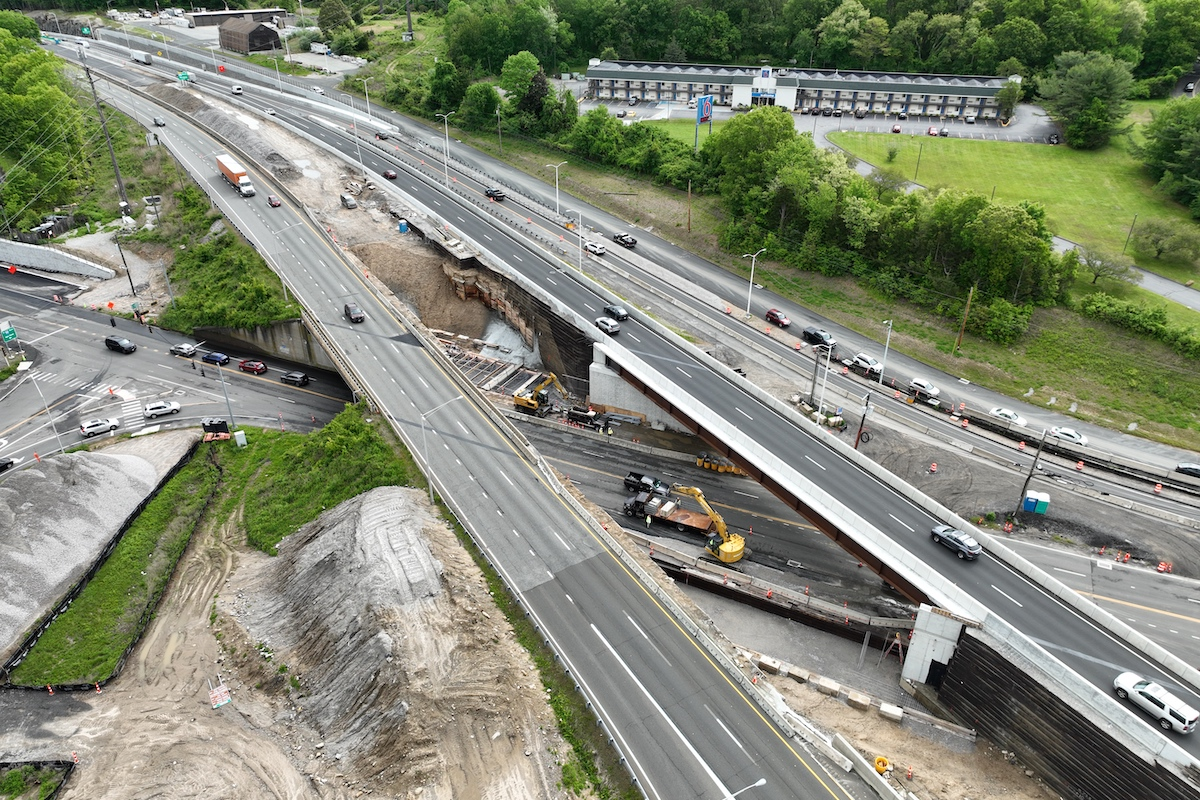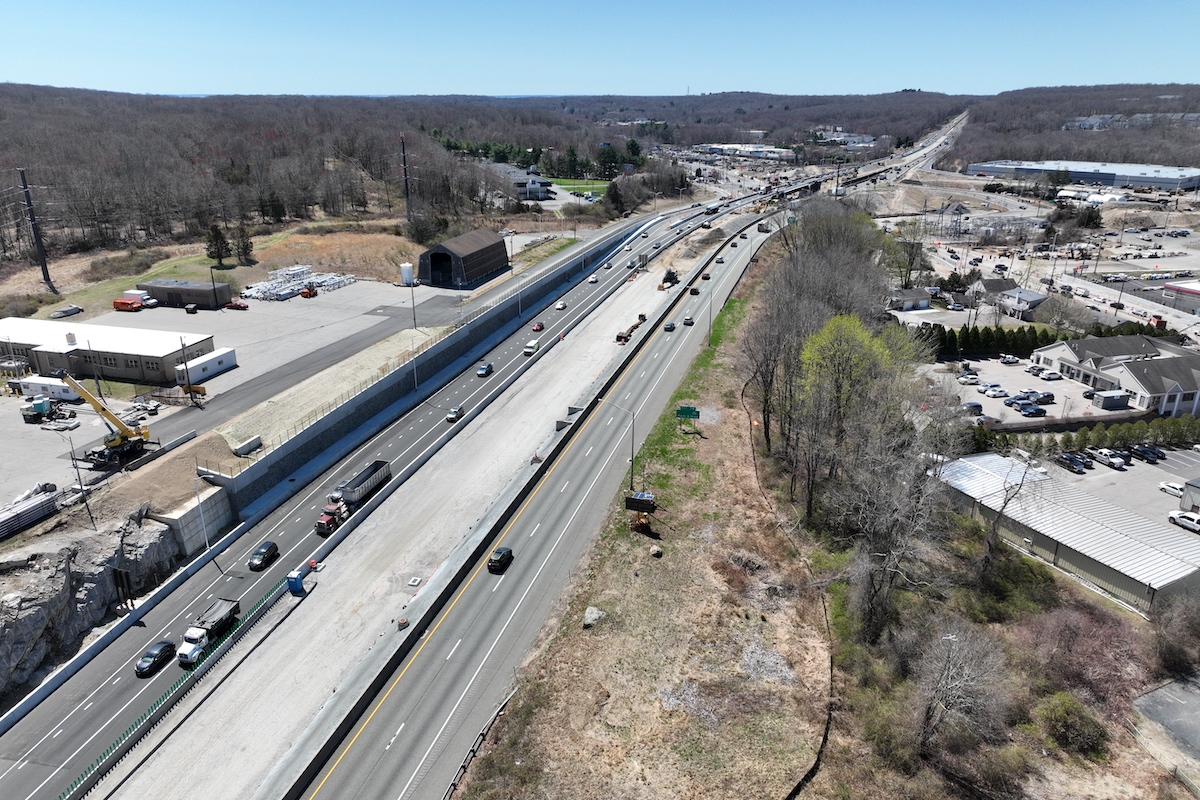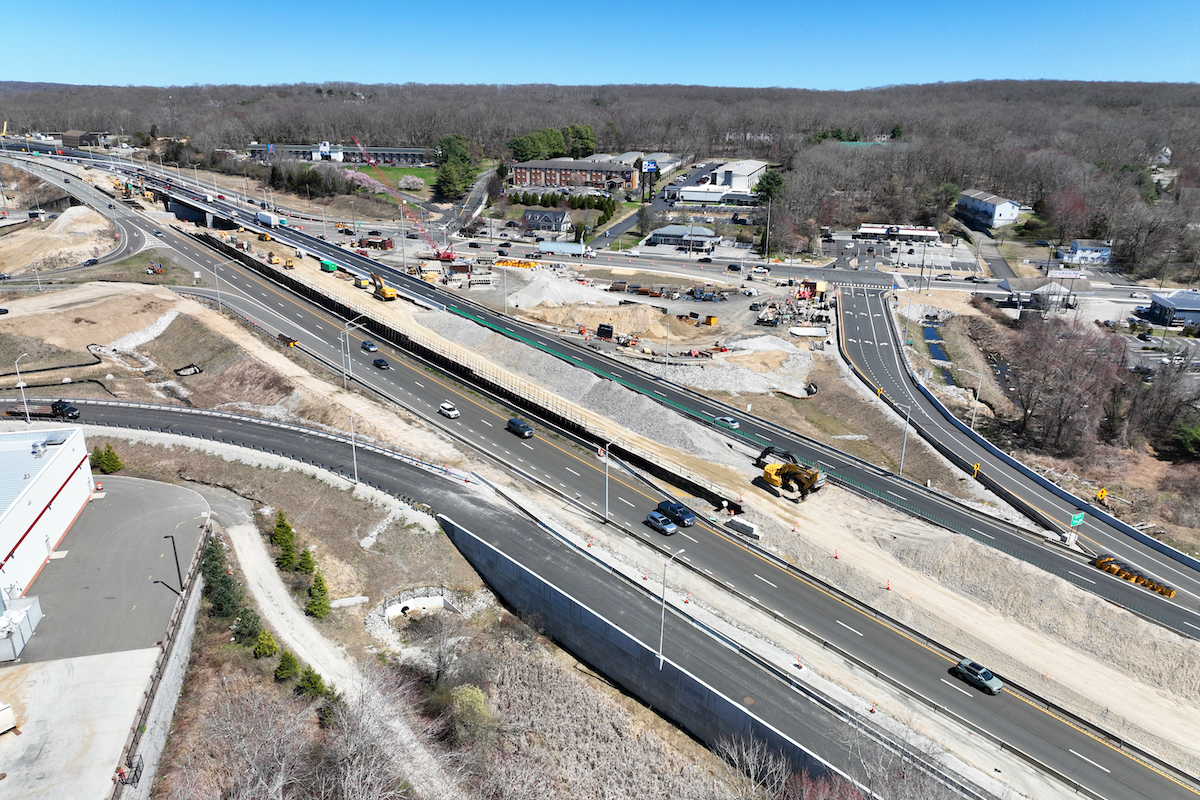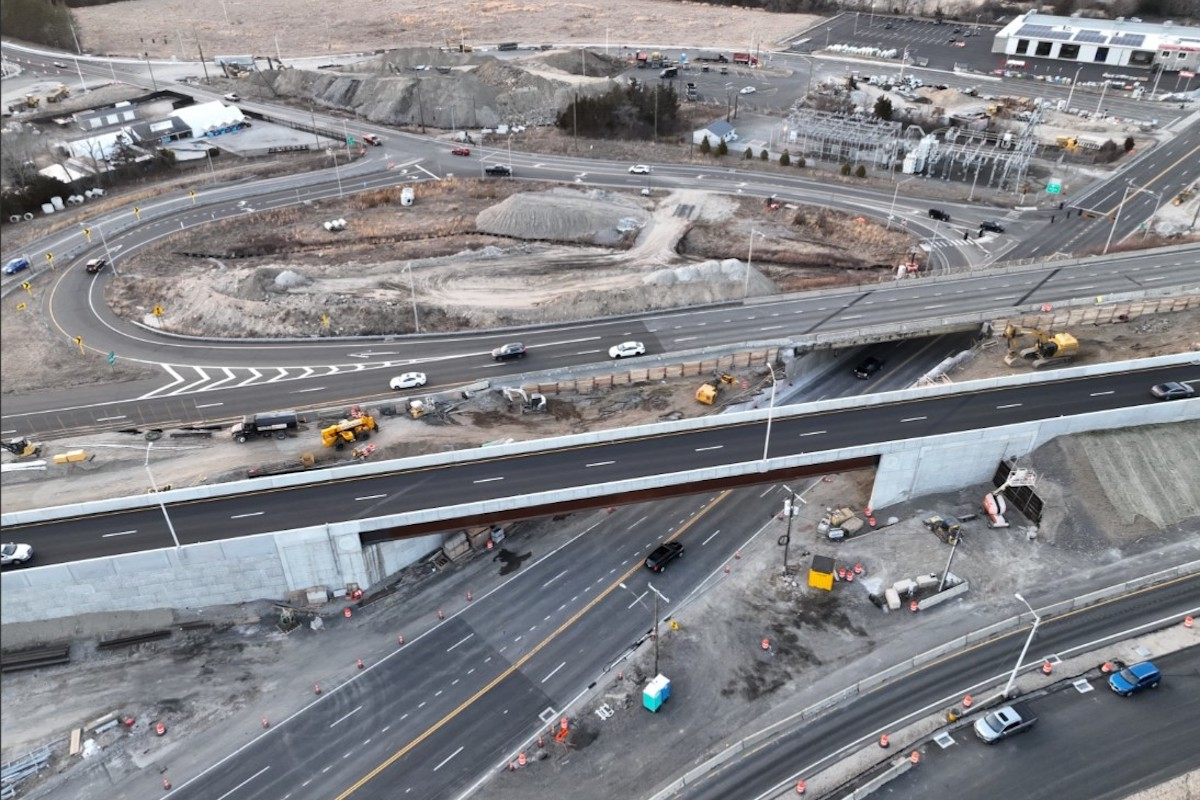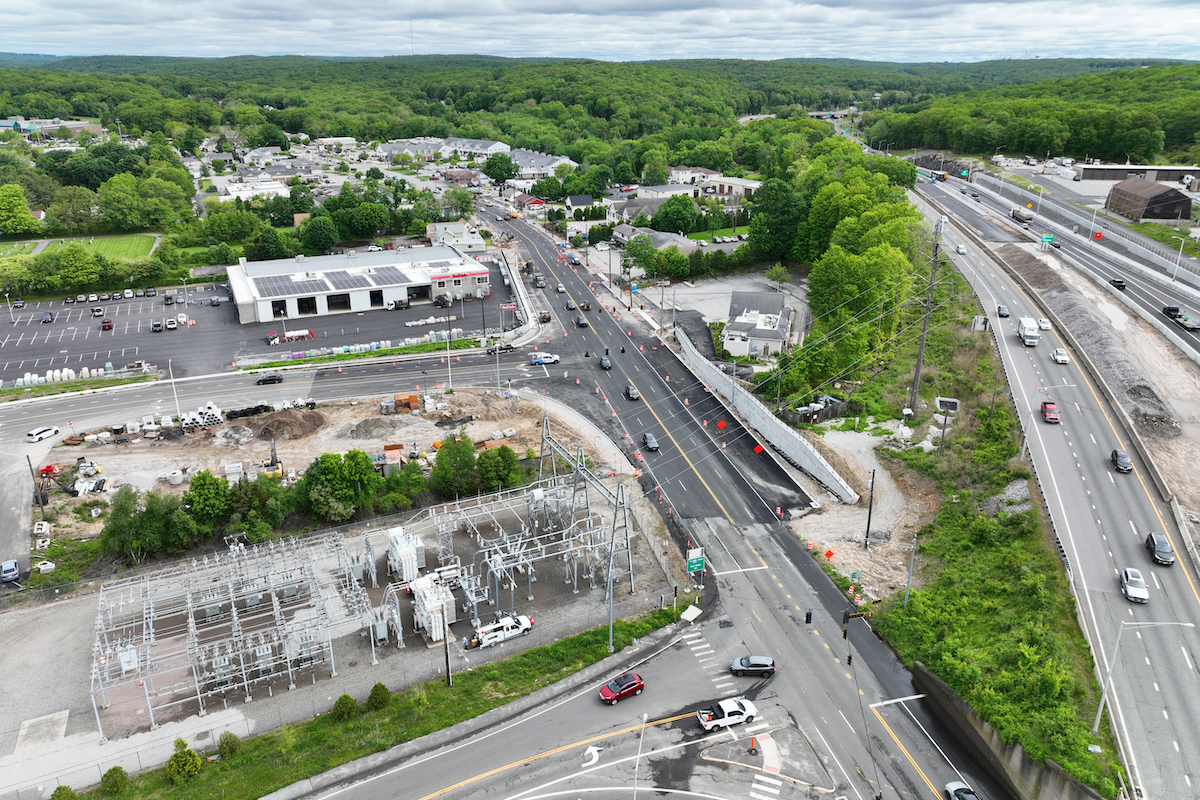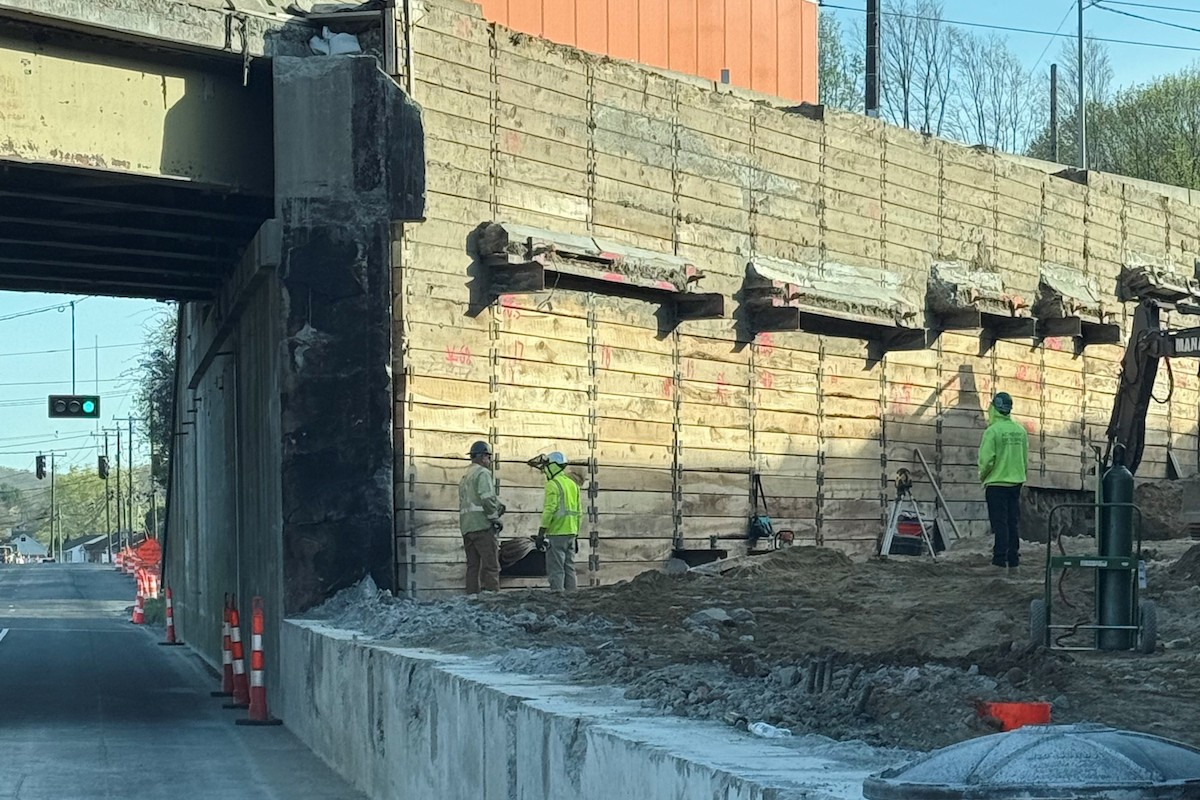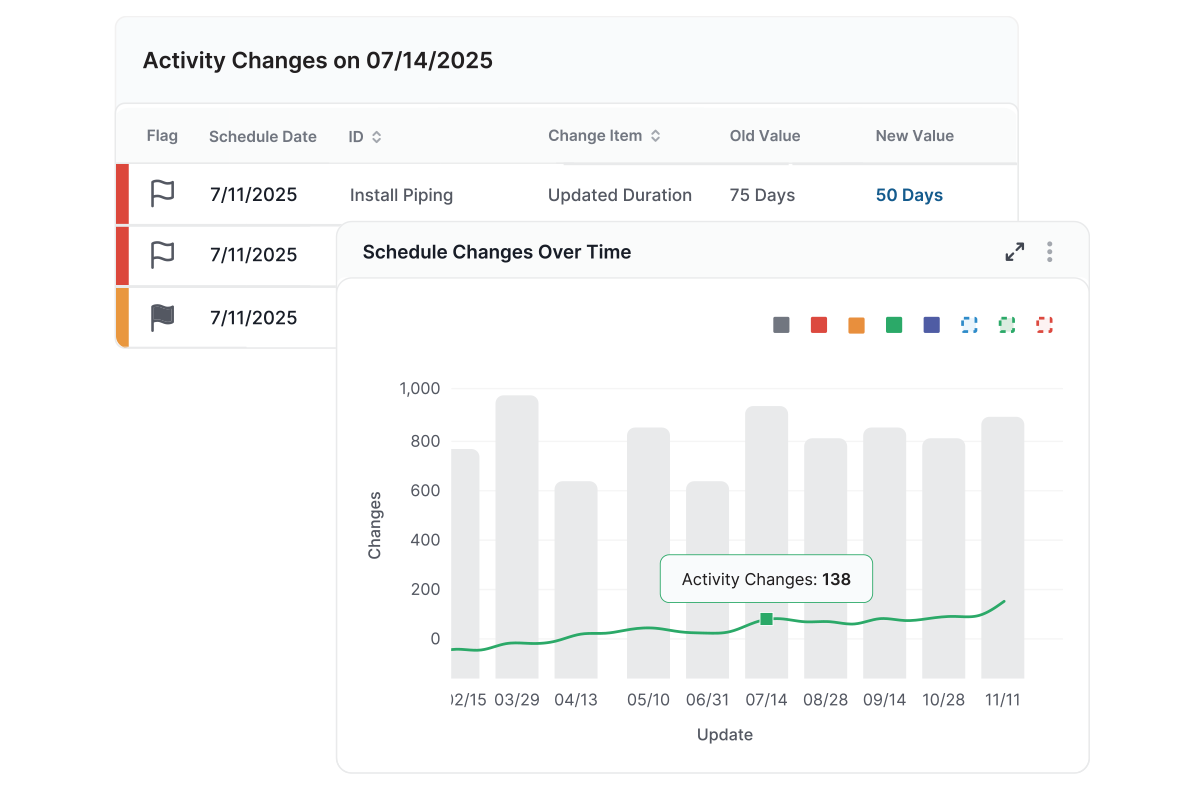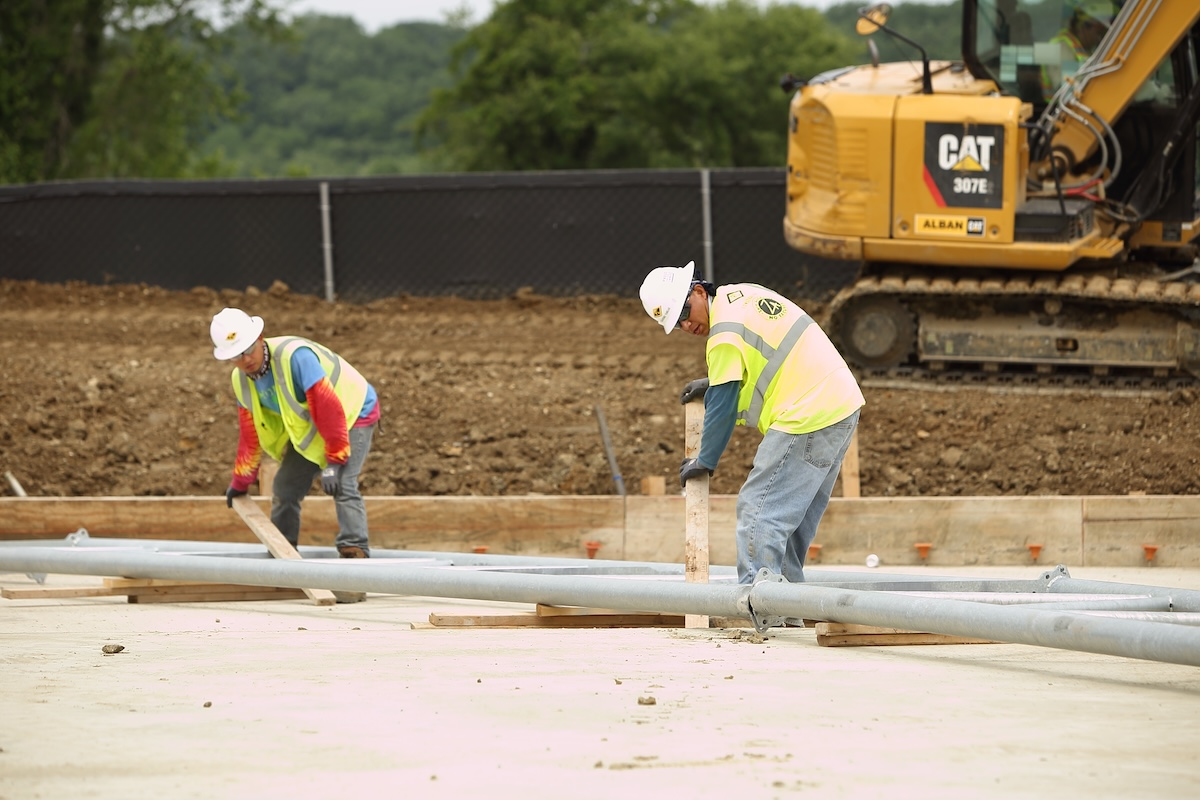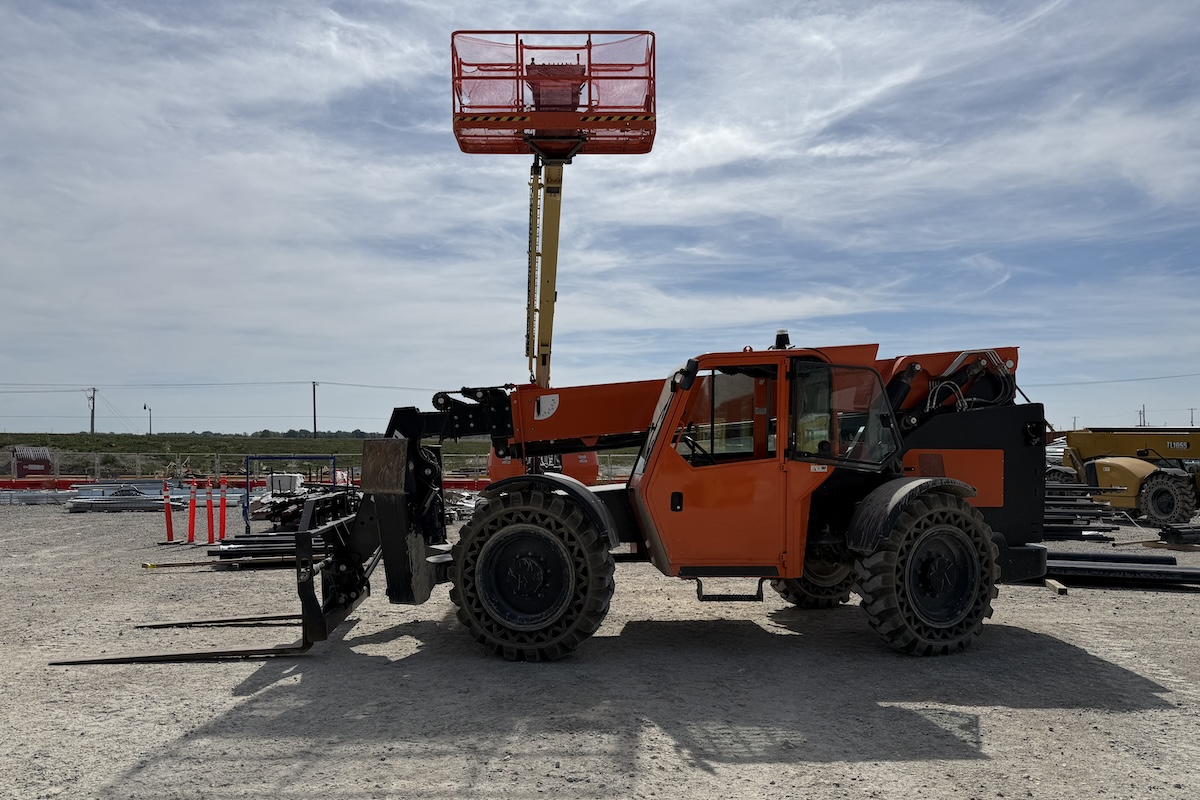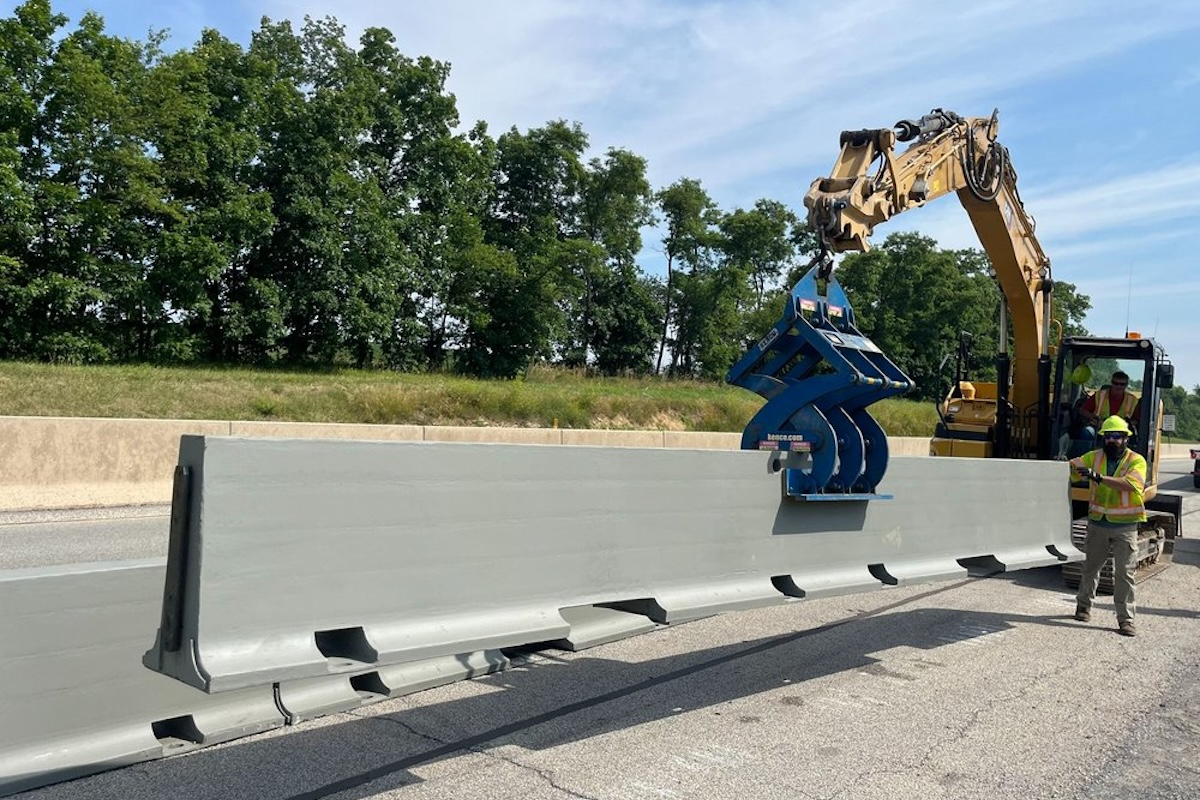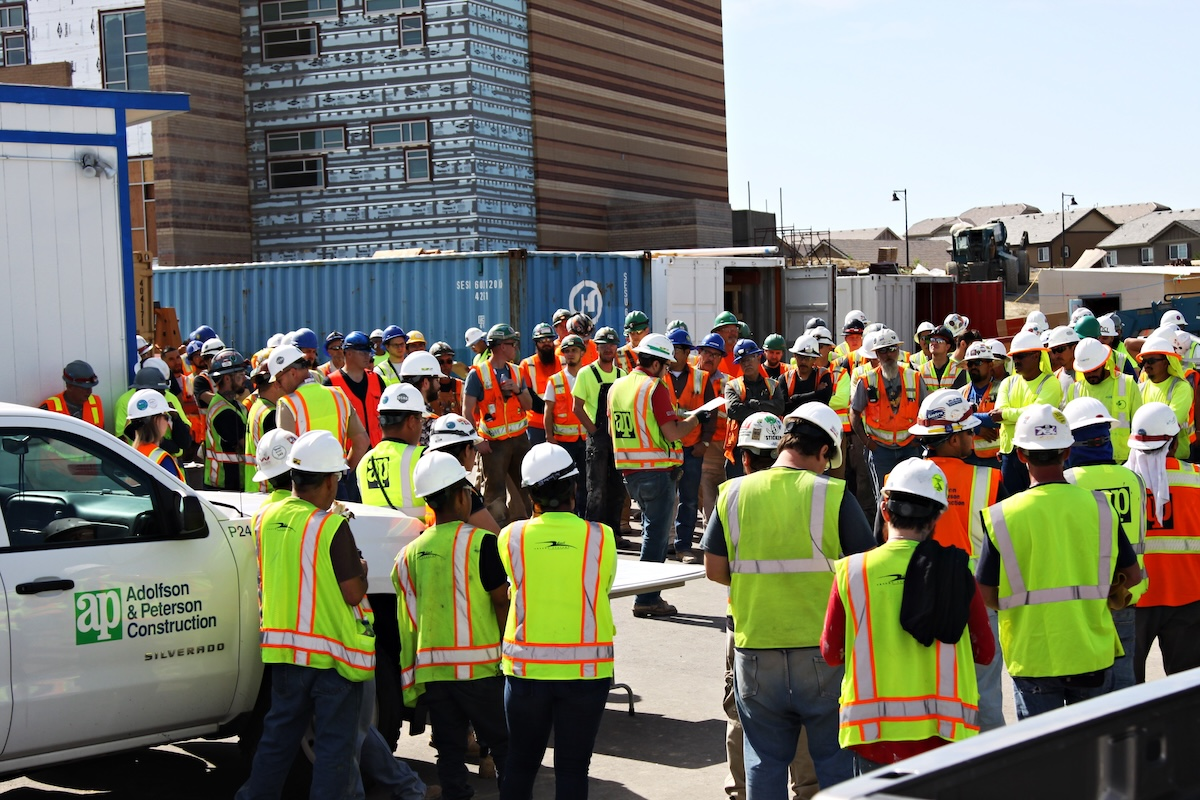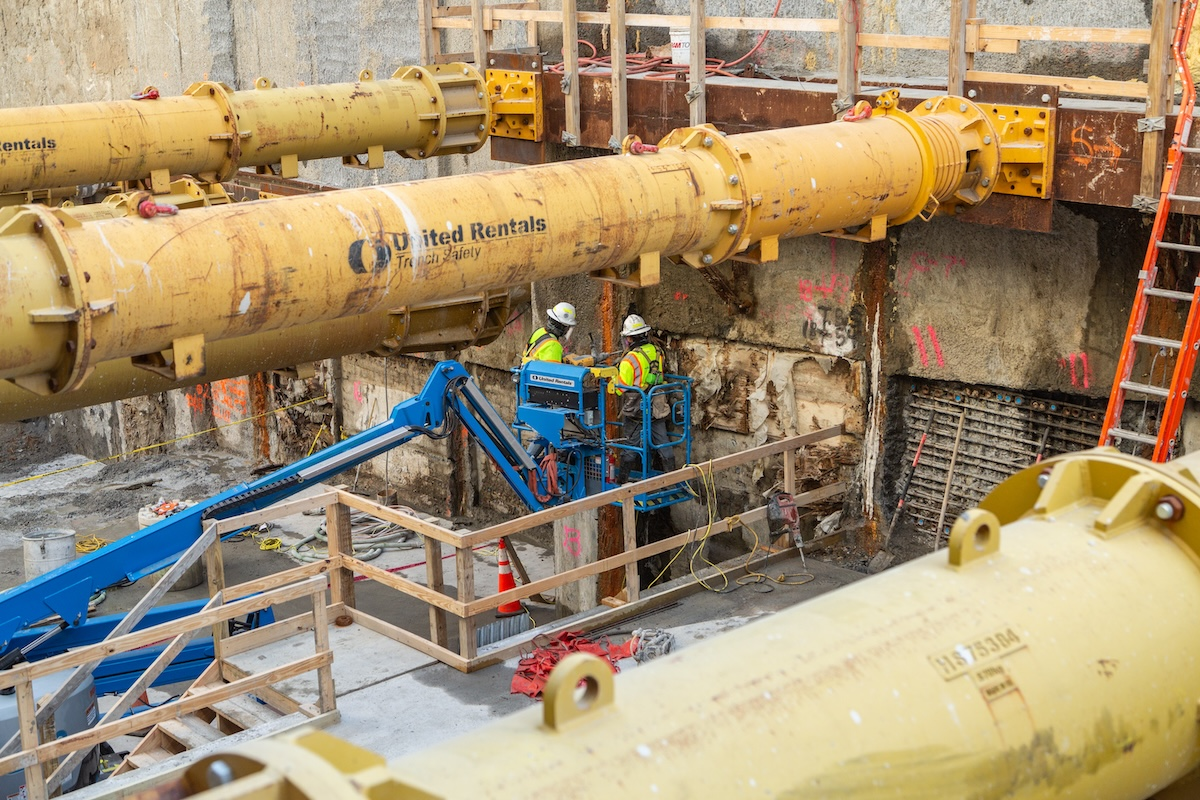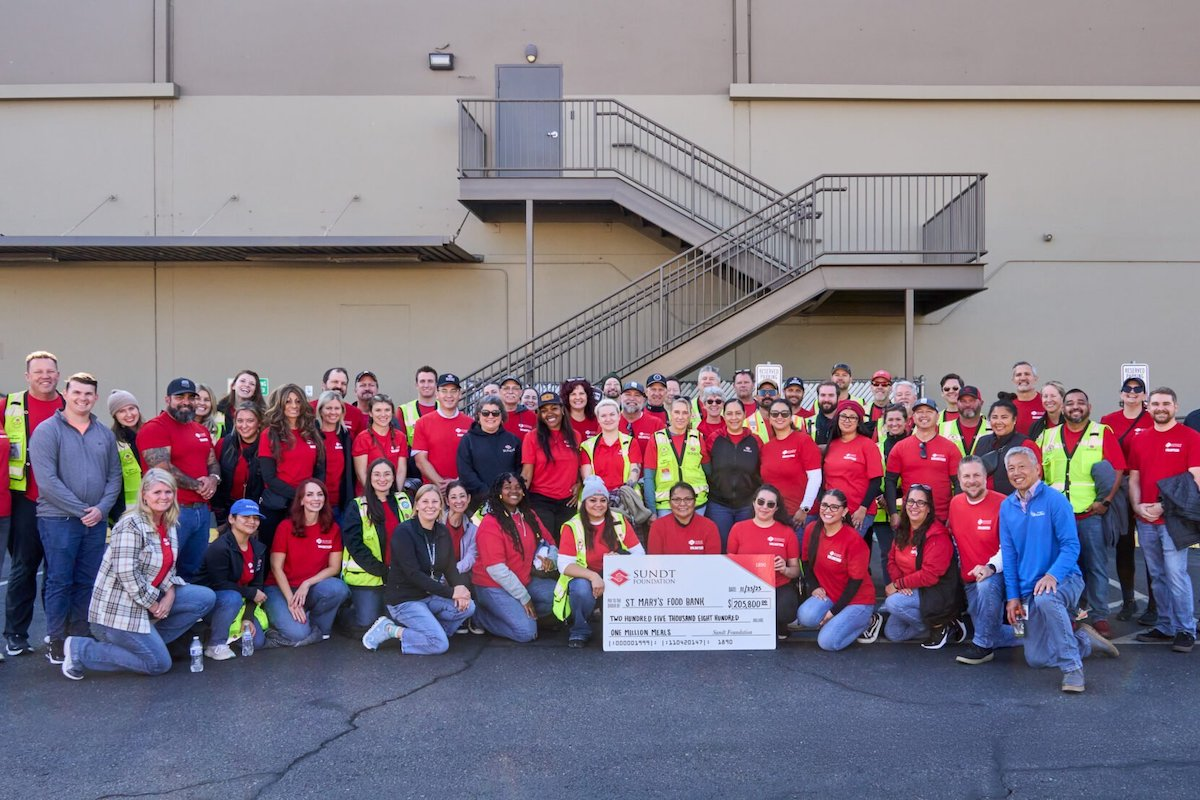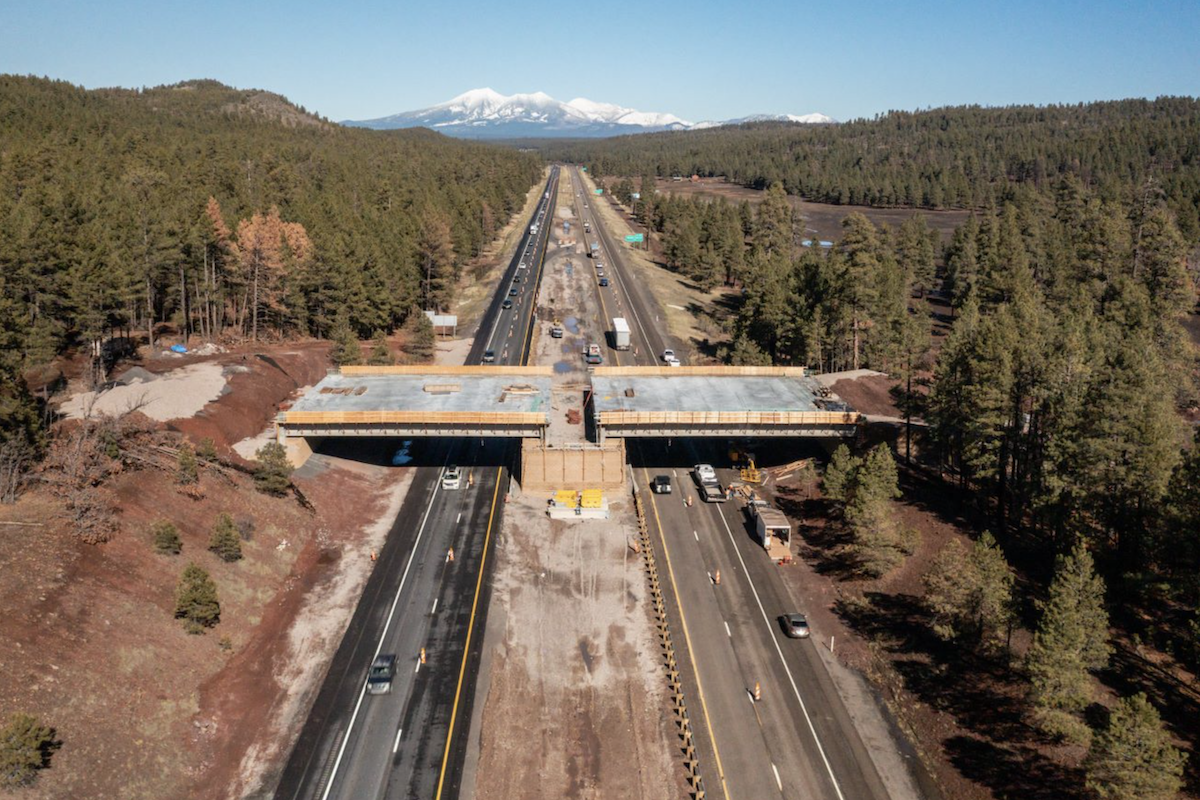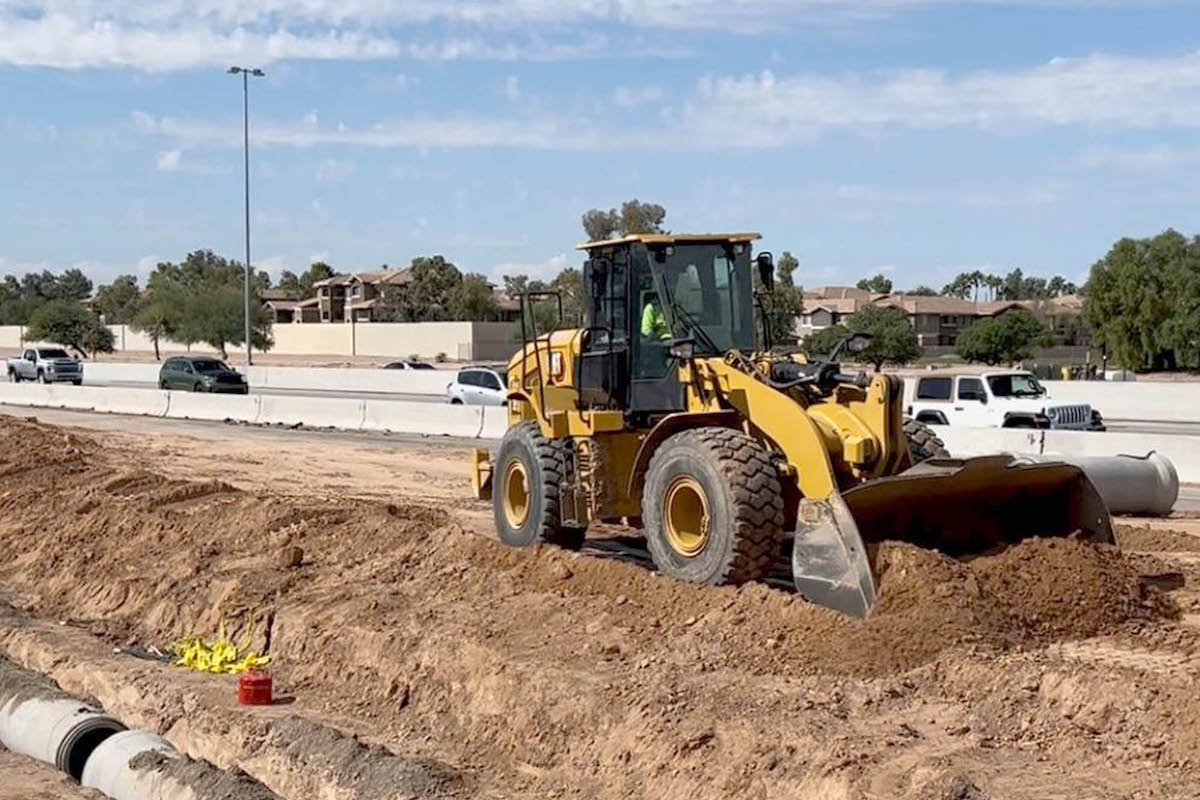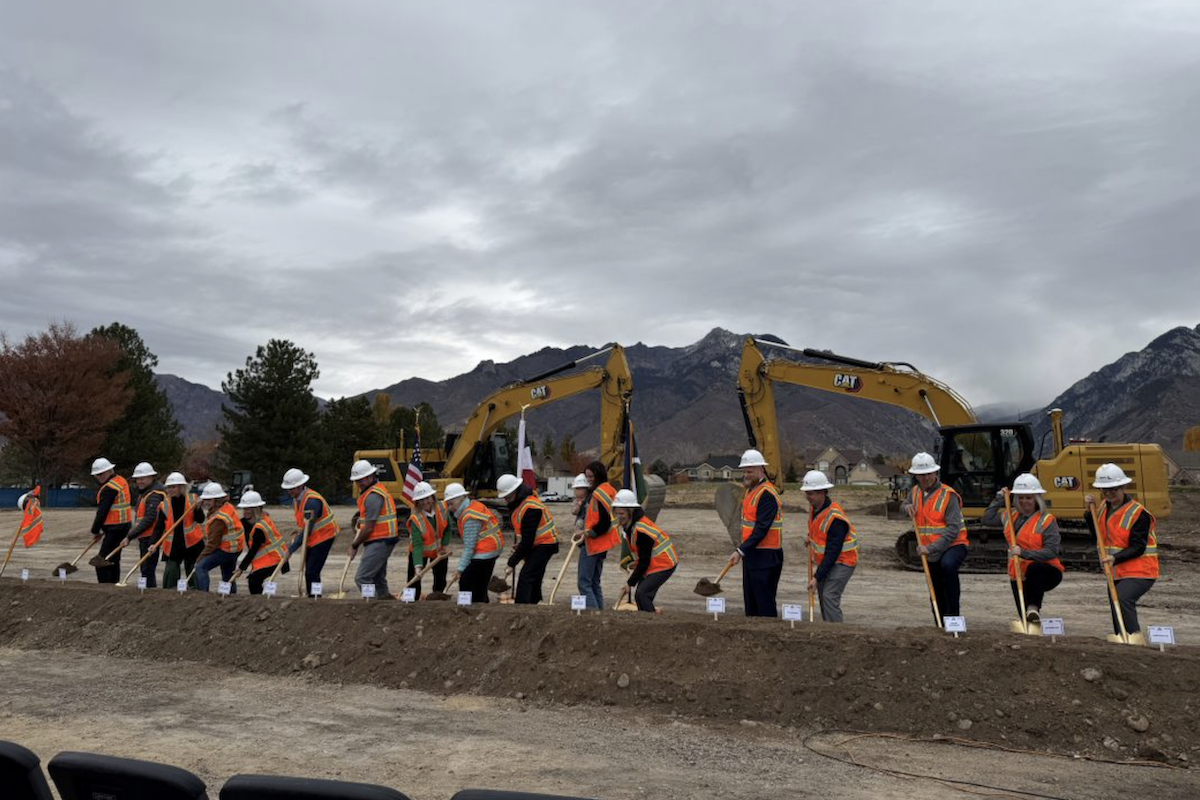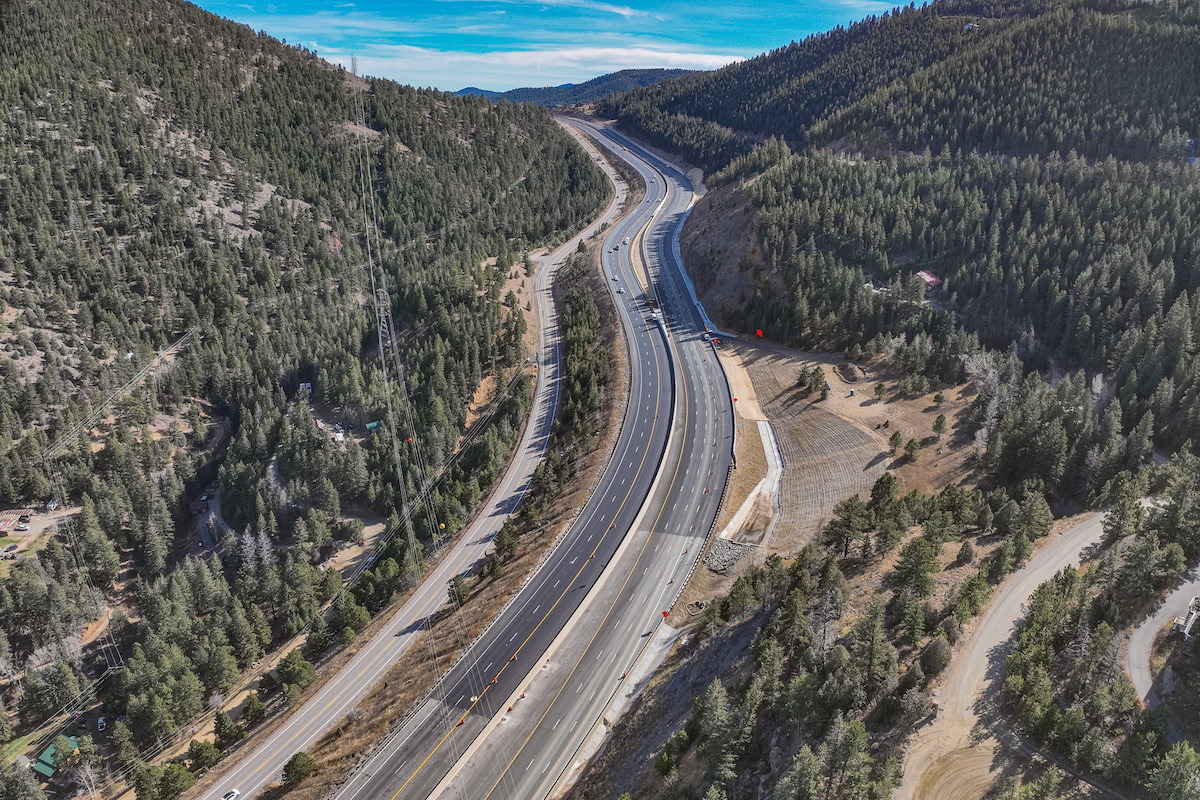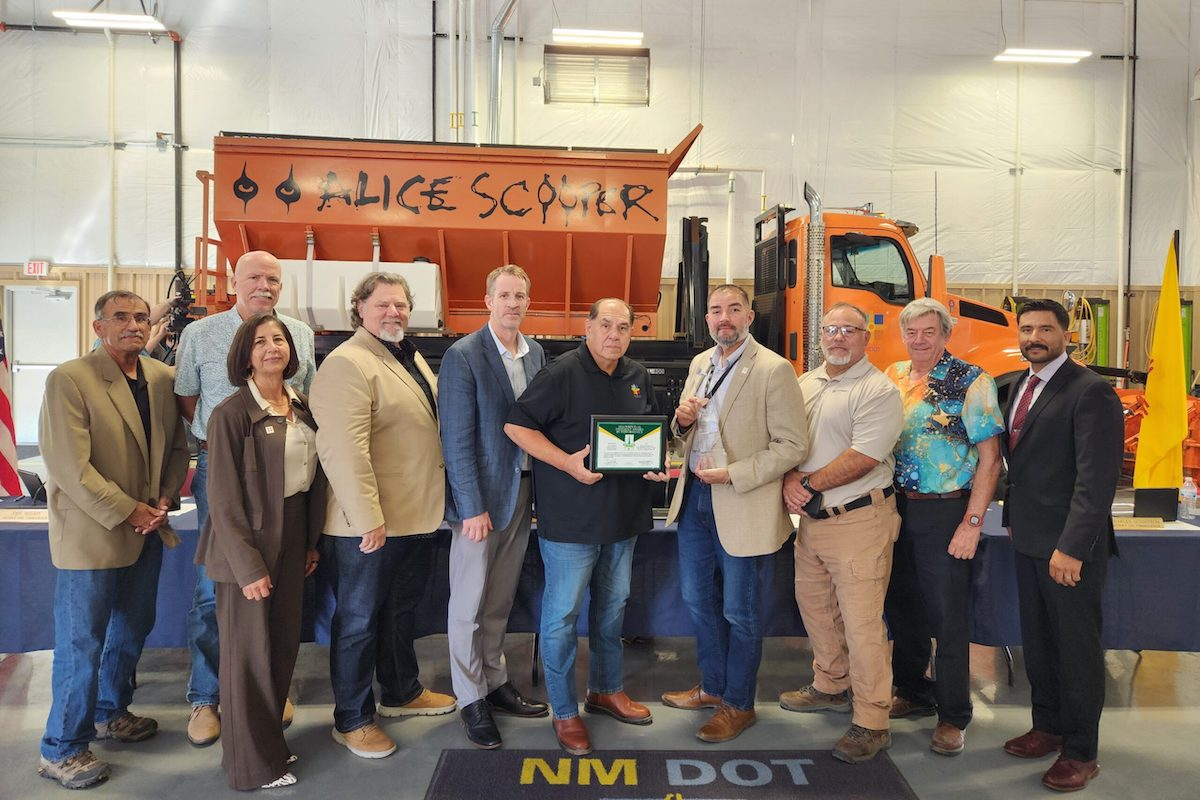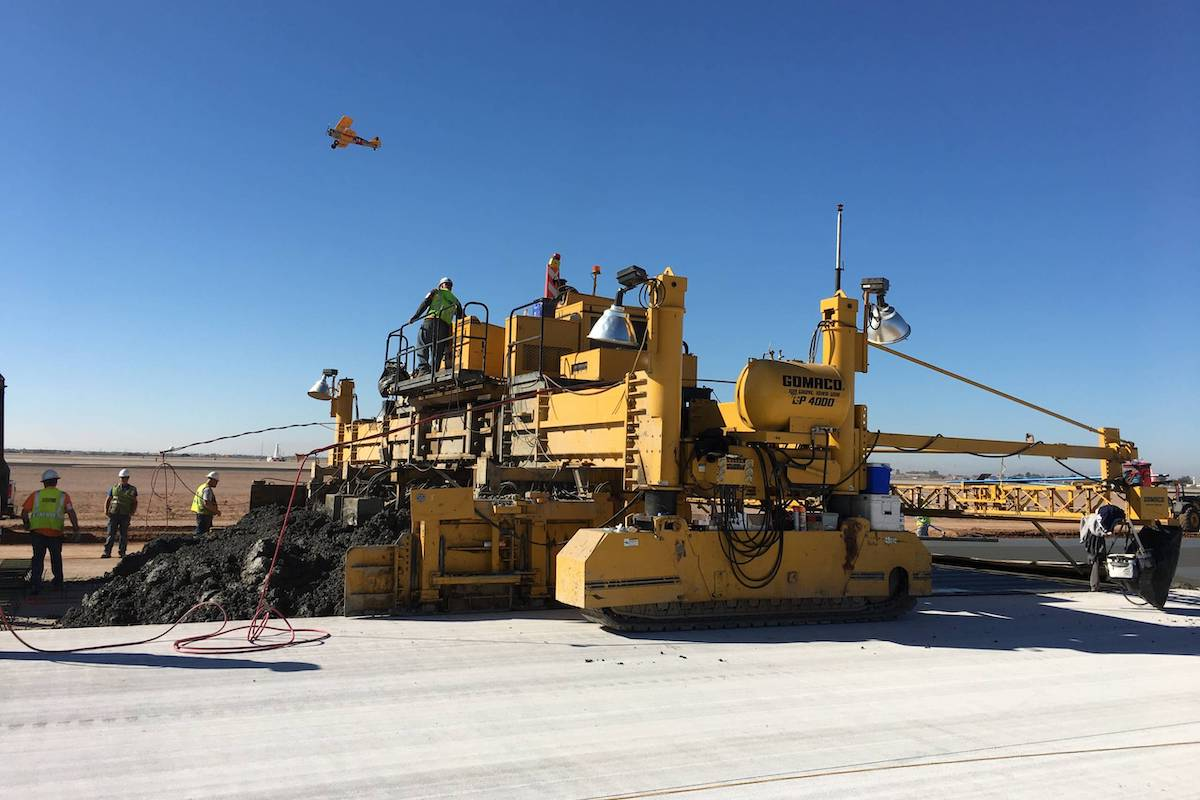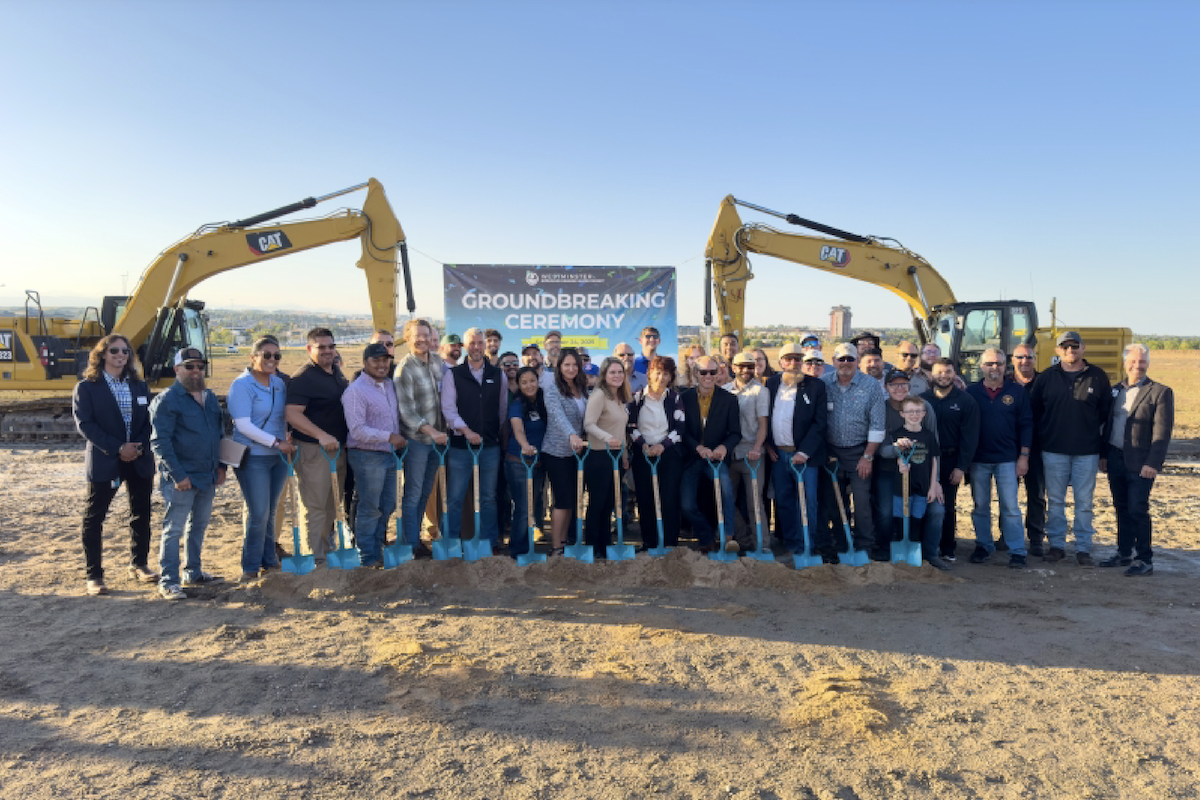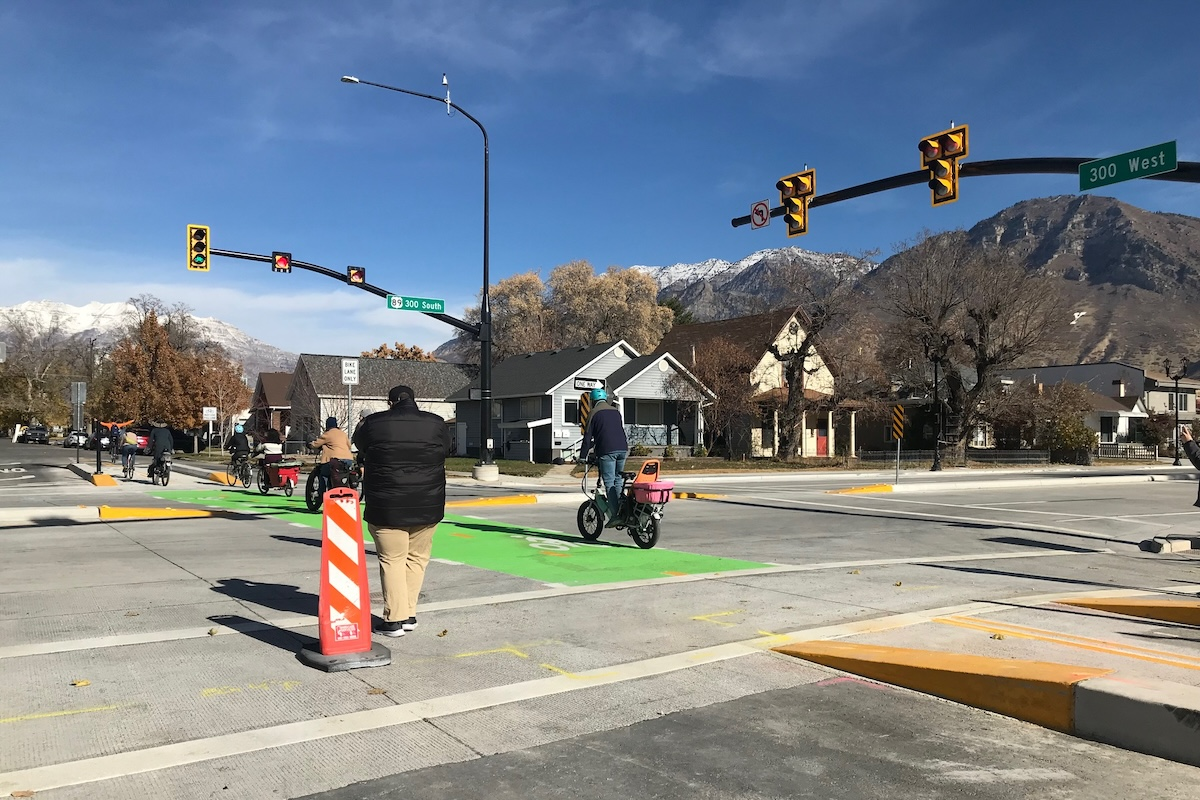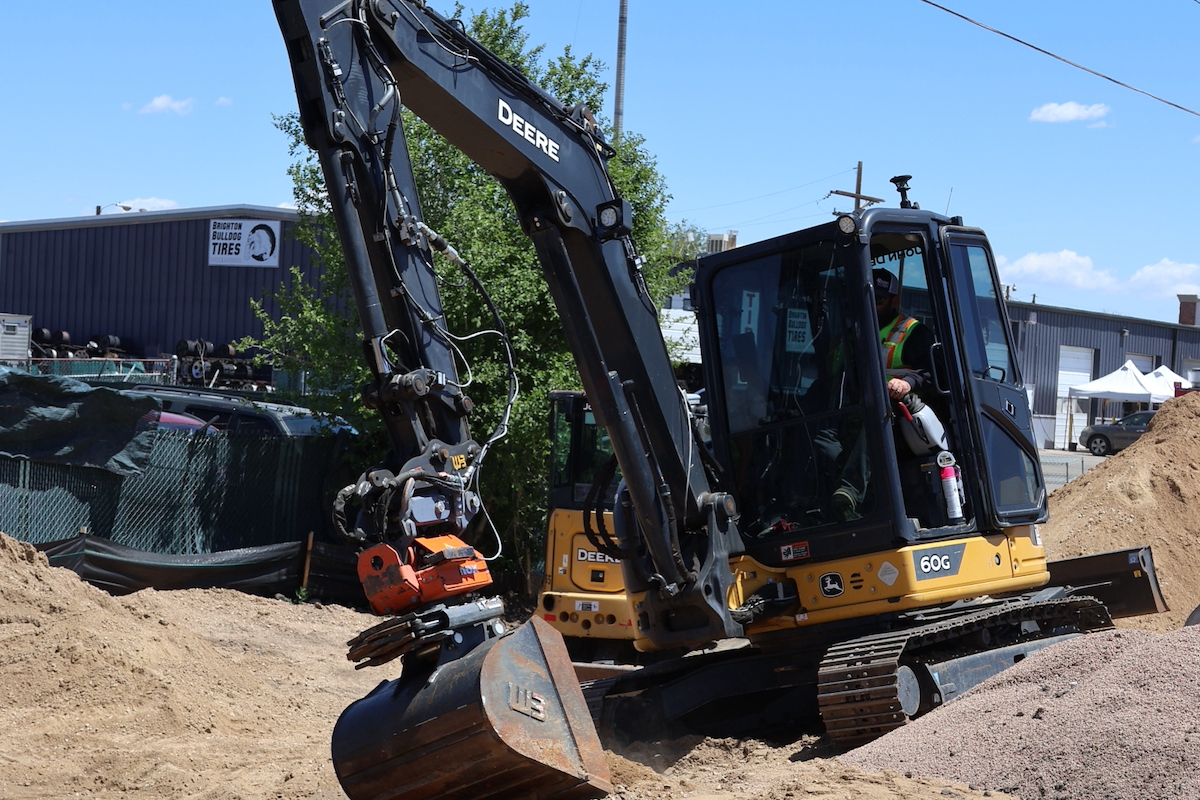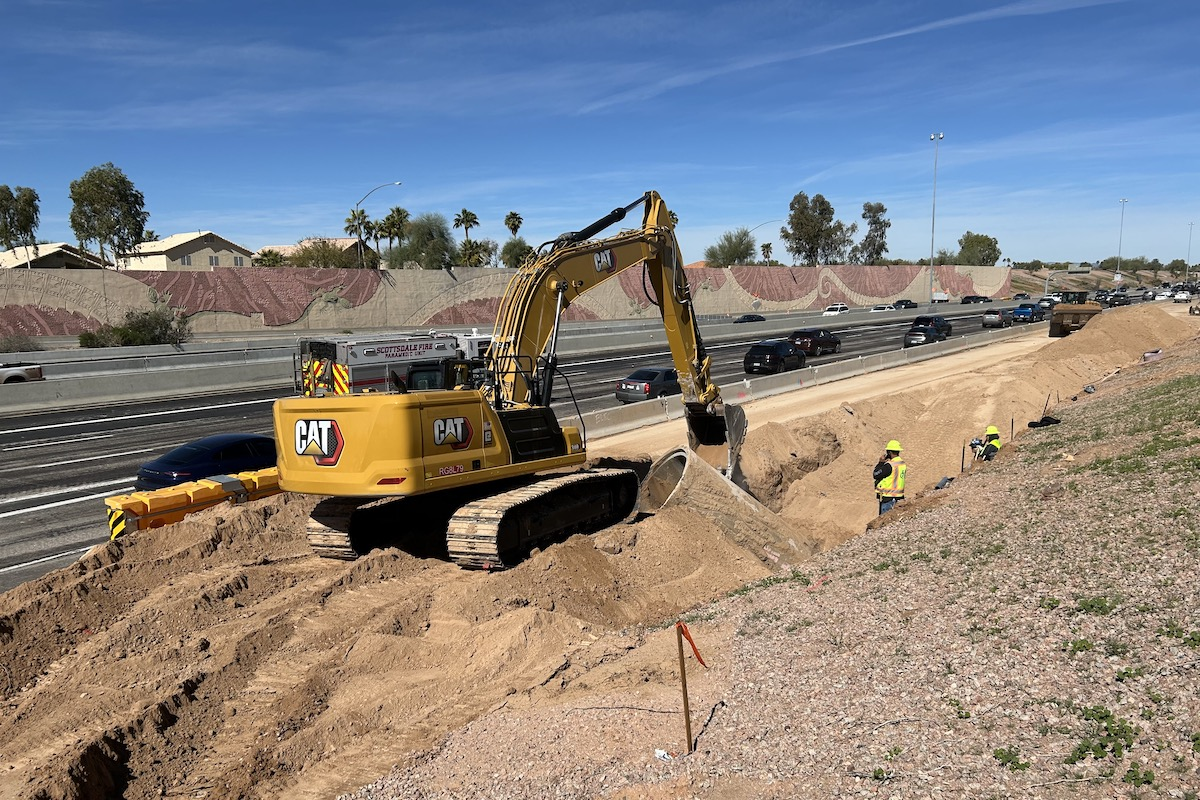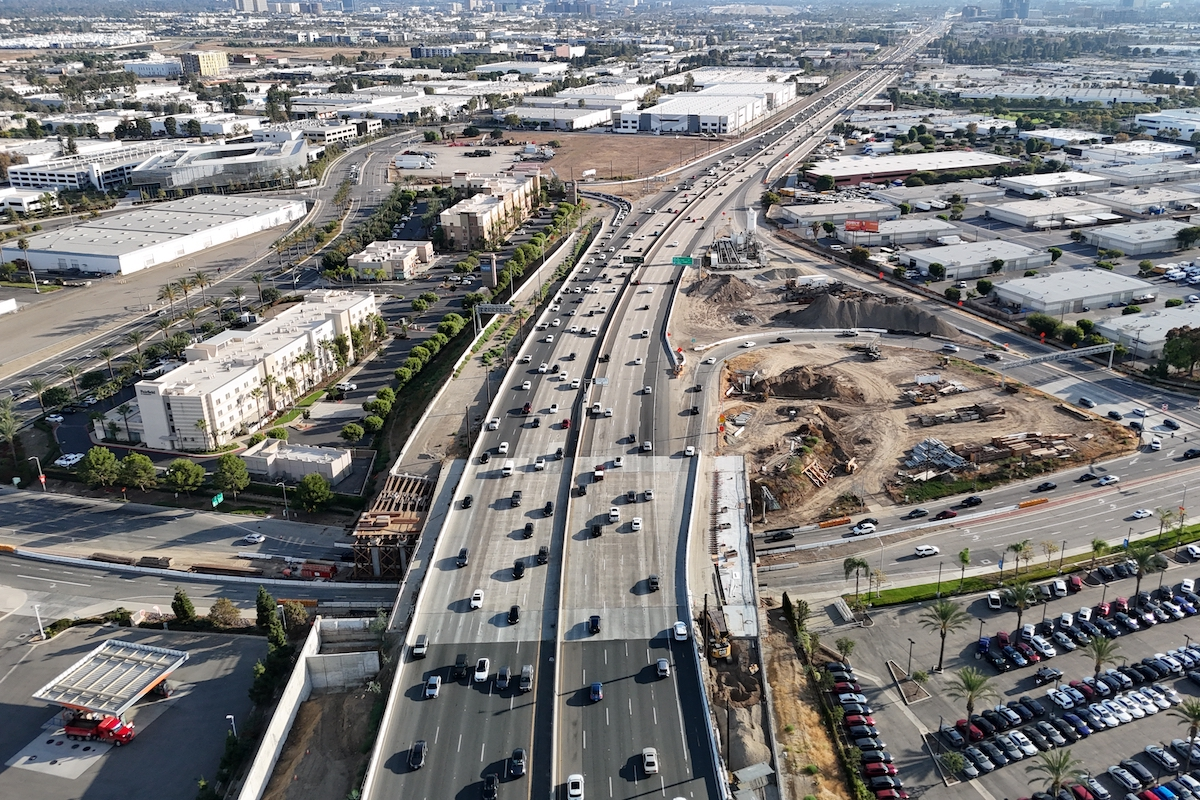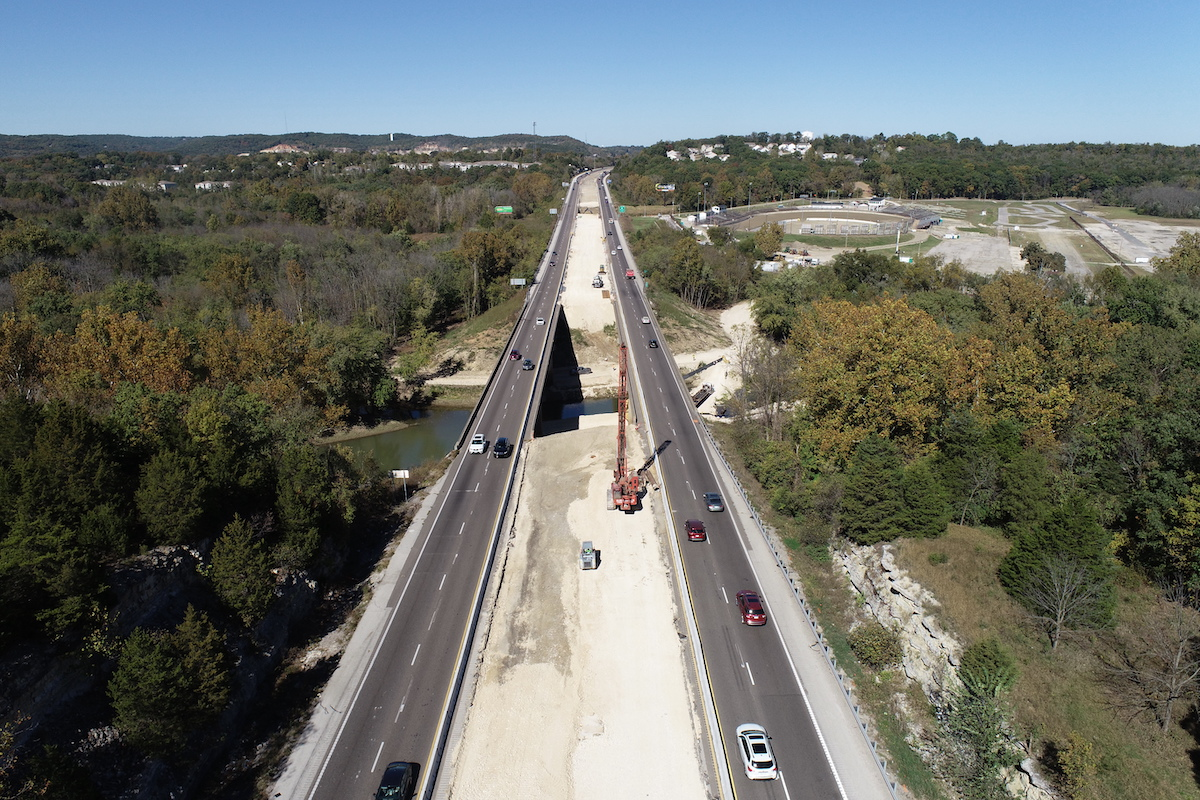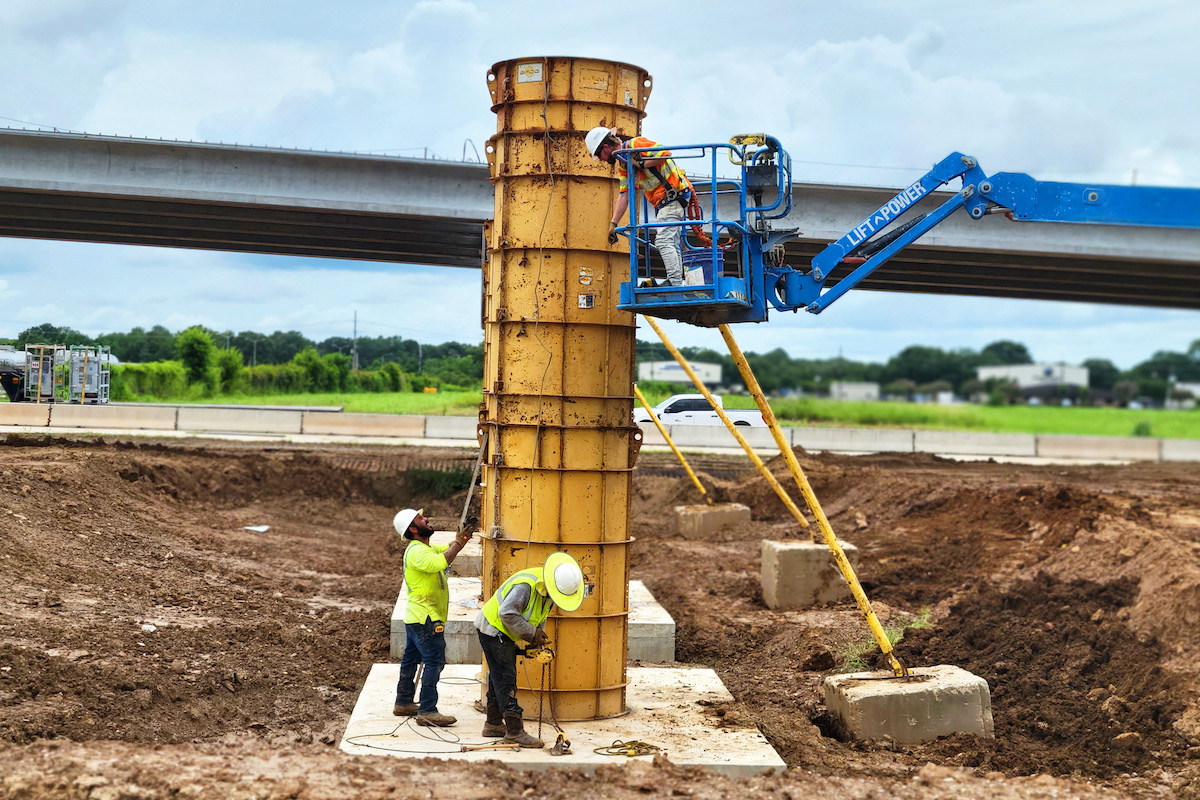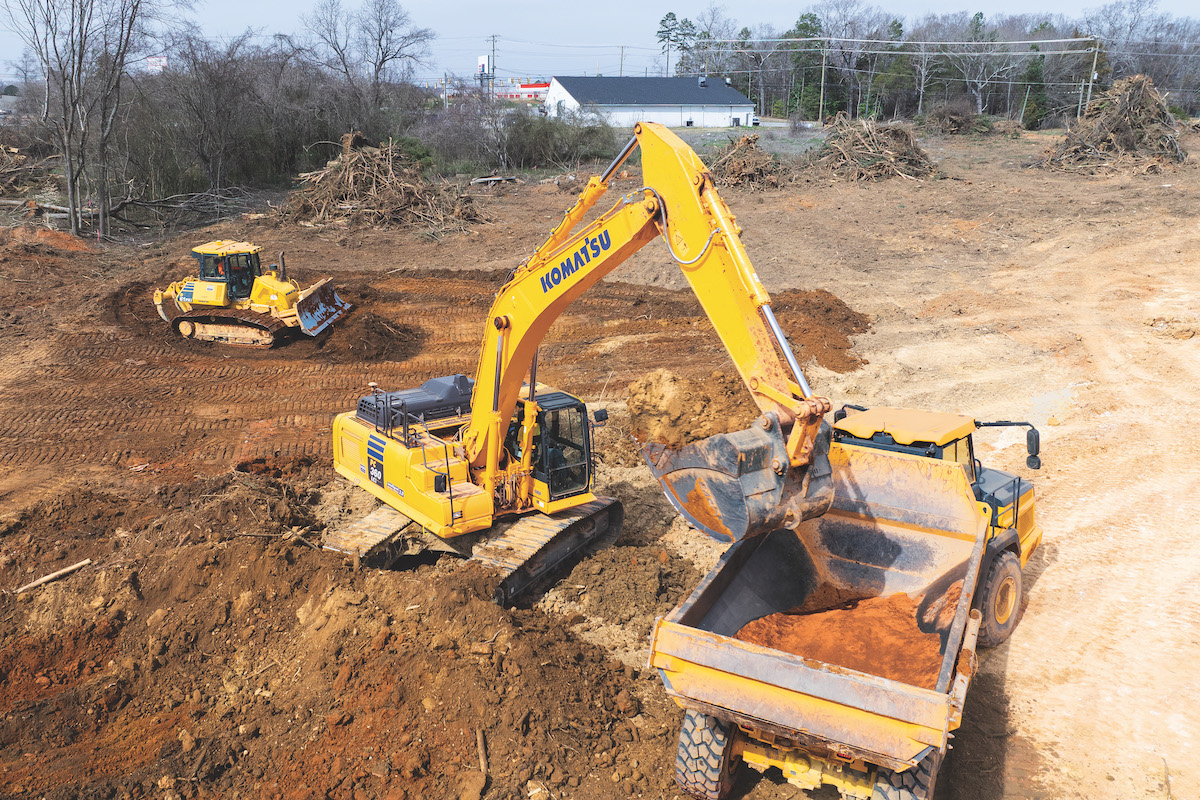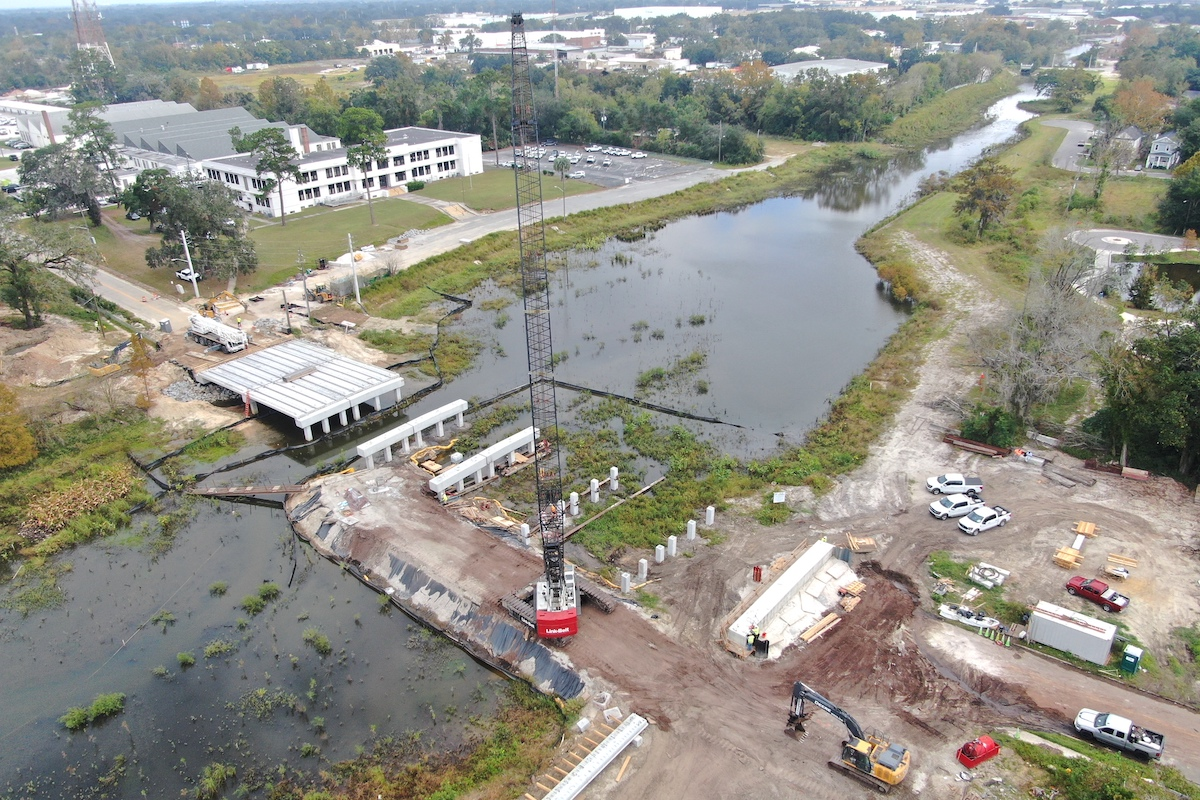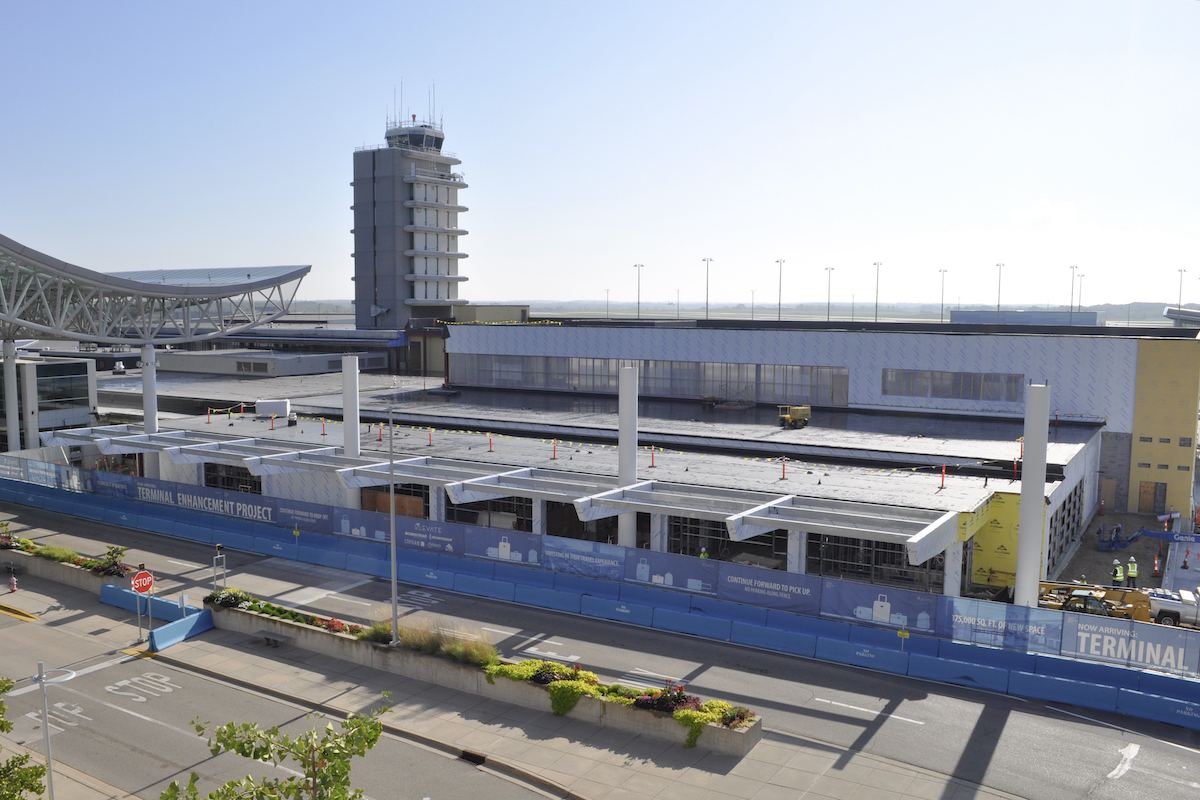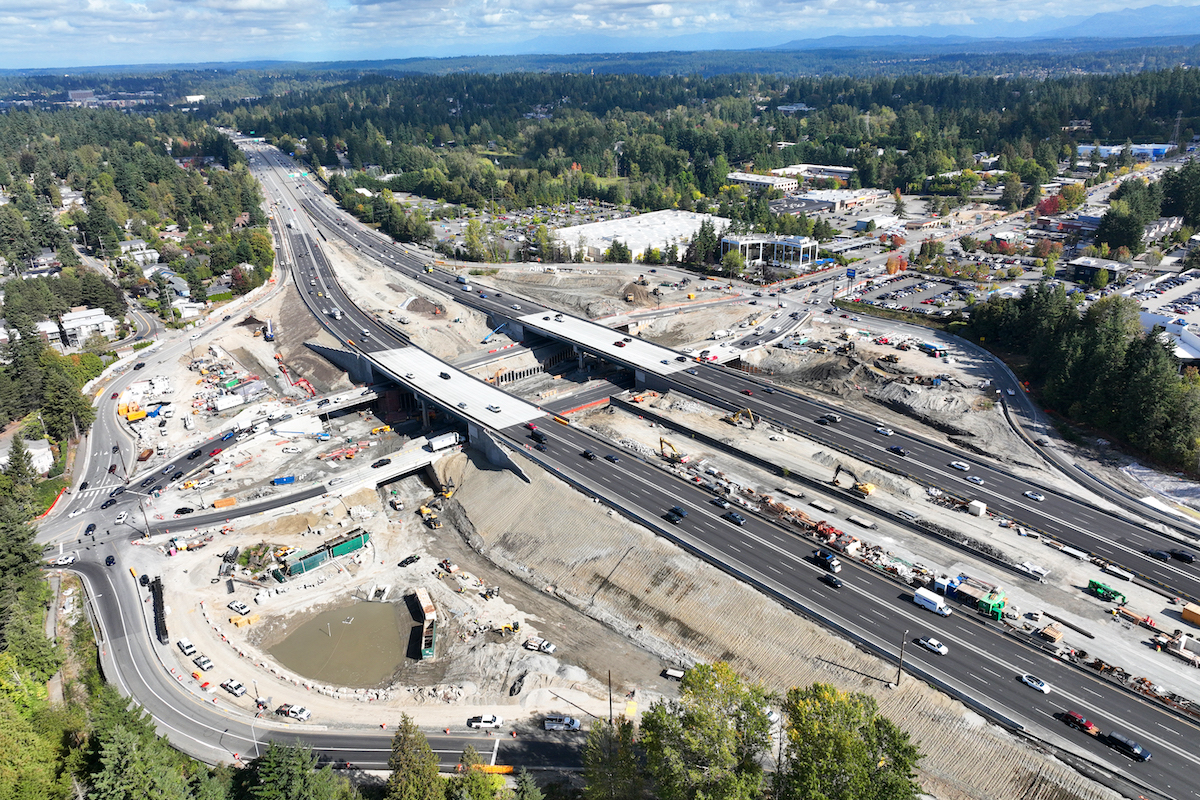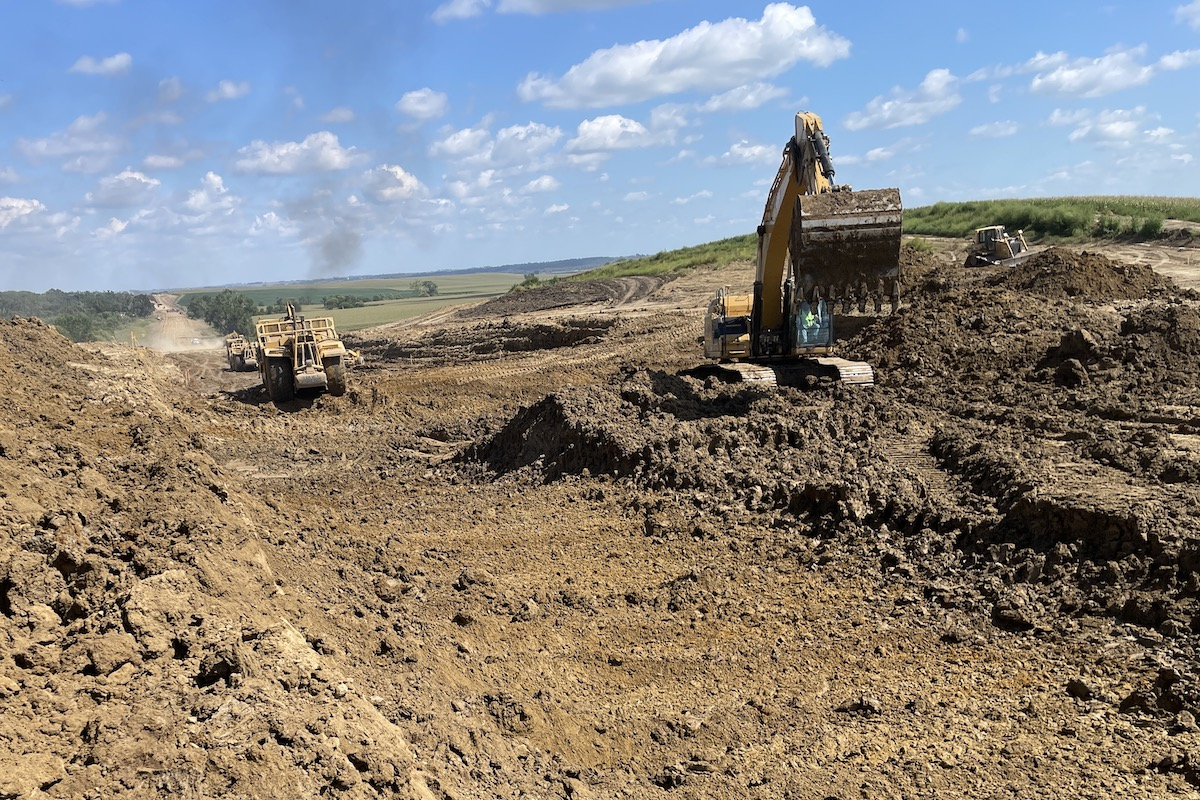East Lyme, Connecticut, lies on Niantic Bay and is part of the Long Island Sound. The town has a steadily increasing population of nearly 20,000. Running through the town is I-95, which the Connecticut Department of Transportation (CTDOT) and Manafort Brothers, Inc. are reconfiguring to improve safety and increase mobility.
The project is taking place along a 1.33-mile stretch of I-95. The average daily traffic along this stretch is 80,000, and congestion is common.
Safety is an issue within the project area, as there is an elevated crash rate. There are a few reasons for the higher rate, according to CTDOT. Among them is the vertical geometry of I-95.
A large hill along the highway causes a line-of-sight problem for drivers. To address this, the team is raising the highway on the south side of the interchange and lowering it on the north side. The issue occurs around a bridge.
“When the project is complete, there will be a 14-foot elevation increase on the south side and 9-foot decrease elevation on the north side to blend the curvature,” said James Therrien, a Resident Engineer for GM2, which is providing construction engineering and inspection services for the state and insuring CTDOT plans are met.

| Your local Volvo Construction Equipment dealer |
|---|
| Faris Machinery |
“The project will correct the insufficient sight lines that people have while traveling along the interstate,” said Andrew Millovitsch, the CTDOT Project Engineer overseeing the project.
The project includes other elements that are also expected to help increase safety. These include:
- Constructing new on- and off-ramps at Exit 74 northbound (NB) and southbound (SB). The off-ramps will be lengthened so drivers will have sufficient time to decelerate as they go around the curve to the signalized intersection. The lengthened on-ramp will give drivers enough space to speed up and enter onto I-95.
- Removing a hairpin left-hand turn for Route 161 SB traffic that crosses two lanes of oncoming traffic to access I-95 NB. It will be replaced by a dedicated right-hand turn lane that accesses a new cloverleaf northbound on-ramp.
- Adding a third lane between exits 74 and 75 on I-95 NB and SB. The goal is to allow locals traveling only between these exits to avoid merging with through traffic. It also enables ample room to merge for those who are continuing on the highway.
- Installing new signalized intersections off the highway, allowing drivers to enter and exit local businesses.
To reduce congestion, the project will:

| Your local Bobcat dealer |
|---|
| Ditch Witch West |
| Faris Machinery |
| Romco Equipment Co |
- Widen Route 161, which runs under I-95. The team is adding turning lanes to the two traveling lanes. They are also widening the shoulders.
- Add a third lane between exits 74 and 75, as noted above. This is expected to facilitate better traffic flow and reduce congestion.
The project is also contributing to the city’s goal of improving foot traffic from the highway to the shore.
The scope includes inputting sidewalks and adding a large commuter lot off northbound I-95. Drivers can exit their vehicles in the lot and walk to the new sidewalks. Previously, there were two small lots. They are being taken out of service due to the highway widening.
A final project element involves the installation of 16 retaining walls. Their size will vary from small to huge structures. The retaining walls are being installed to maintain the elevation changes.

| Your local Gomaco dealer |
|---|
| Faris Machinery |
| Tri-State Truck & Equipment Inc |
“If we went in another direction [and not installed retaining walls], it would have been necessary to purchase real estate on both sides of the highway to achieve the needed slope to improve the geometry of I-95,” Therrien said.
The project required the team to excavate 150,000 cubic yards of earth and 50,000 cubic yards of rock. The team has plans to use the materials for the large fills along the highway and construction of some of the new on- and off-ramps that were excavated. However, that element will occur in the later stages of the project’s eight-stage construction plan. Finding space to store the materials until then was a challenge.
“We massaged the original staging plans to free up real estate and give us a place to store the materials,” Millovitsch said. “If we wouldn’t have been successful in doing this, it would have required shipping the materials off site and bringing them back when we needed them.”
Changing the project staging and using materials on ramps and walls outside of the contract staging plans saved time and money and lessened the environmental impact.

| Your local Trimble Construction Division dealer |
|---|
| SITECH Northwest |
| SITECH Rocky Mountain |
| SITECH Southwest |
Besides the large quantity of soils being handled as part of this project, the existing soil conditions presented other issues. The subsurface conditions found under the existing highway are substandard to build on, as it has many voids and is not a completely solid mass. This issue was not a big surprise to the team, given the landscape of East Lyme. However, according to Therrien, it made the soil difficult to work with.
“We used grout to fill the voids and stabilize the soil,” he said.
When installing temporary retaining walls to hold up existing I-95 lanes during construction, metal rods are drilled horizontally and grouted into the existing soils to stabilize the temporary walls. As grout was being installed for these stabilizing steel rods, the voids were apparent because the team needed 50 to 100 times the anticipated amount of grout to secure the rods.
This effort was essentially filling these voids under the existing highway. Large boulders were used as backfill under the old highway. To help facilitate this process, a chemical was added to the grout being used, which caused the grout to expand once it was pumped into place.

| Your local Volvo Construction Equipment dealer |
|---|
| Faris Machinery |
Located in Plainville, Connecticut, Manafort Brothers Inc. is a “demolition and construction company that performs specialty construction and demolition services as well as general contracting services,” according to their website.
Millovitsch worked with them previously. Both he and Therrien said they have been impressed with the general contractor, particularly their quality control.
“Manafort’s quality control has been exceptional, and they’ve been exceptional at self-policing quality control,” Millovitsch said.
“The general contractor is required to come up with a quality control plan, and Manafort has embraced the state’s requirements,” Therrien added. “They submit documentation on time, foreshadow issues prior to starting activities, and develop plans that mitigate constructability problems before they even happen, which has helped us move through issues prior to them actually occurring.”

| Your local Volvo Construction Equipment dealer |
|---|
| Faris Machinery |
“They’ve partnered with the department during construction to keep the project moving in a positive direction, have good field supervision, identify constructability concerns, and come up with resolutions for schedule impacts,” Millovitsch said.
Manafort’s work has led to the project being both on budget and on schedule.
The project has a construction budget of $148 million. The federal government is paying 80 percent of the funds, while the state is financing the remaining 20 percent. The project is within contingency (10 percent). There have been an additional $8 million in project costs.
“The majority of the extra money has gone towards addressing the unforeseen soil conditions,” Therrien said. “Our plan was to use standard mechanically stabilized earth walls, but due to the soil conditions, we had to change to soldier pile and lagging walls which brought on scope changes and increases costs.”

| Your local Volvo Construction Equipment dealer |
|---|
| Faris Machinery |
Construction on the project began in April 2023. The state gave the general contractor 976 calendar days, which is four construction seasons. The target end date is November 2026.
At the time of writing this article, the project is on schedule despite the soil challenges described above.
“Great communication between us and the design team and us and the contractors has been a key factor in keeping this project on schedule,” Millovitsch said.
He also credits Manafort. “They’ve worked the past two winters and have been dedicated to working throughout the year,” he said. “We typically have a four-month winter shutdown from December to March, but Manafort has found a way to move forward during the winter months.”

| Your local Volvo Construction Equipment dealer |
|---|
| Faris Machinery |
If not for the soil issues, Therrien and Millovitsch think the project would have finished early and that it still might.
When the I-95 Interchange 74 Improvements project in East Lyme is completed, the section of highway will be safer. Drivers will no longer face a line-of-sight problem, as the geometry issues will be minimized. Entry and egress from the highway will be less challenging, and congestion will be lessened. Locals and tourists can also enjoy greater mobility while walking in the area.
- Owner: Connecticut Department of Transportation
- General Contractor: Manafort Brothers, Plainville, Connecticut
- Designer: H.W. Lochner, Inc., Chicago, Illinois
- Construction Engineering & Inspection: GM2 Associates, Inc., Glastonbury, Connecticut

